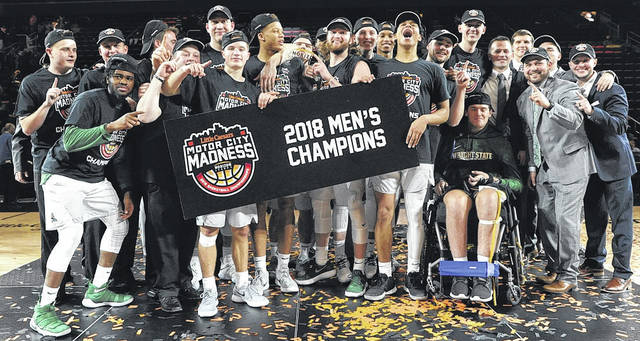When LeBron James pulls into the parking lot at Quicken Loans Arena, there are cameras waiting.
They follow him into the arena, record him walking down the hall to the locker room. They are there when he’s changing into his uniform. They are there in the huddles during timeouts and there during the halftime meetings as coach David Blatt details adjustments for the second half.
The blanket coverage is aimed at bringing fans watching on television as close as possible to one of the most popular athletes in the world. Sometimes they can get a little too close, as they did just before Game 4 of the NBA Finals when James inadvertently exposed himself to the television audience while adjusting his jersey and shorts.
For athletes across all sports, the primary focus of sports as entertainment has shifted from the thousands of fans watching in person to the millions of fans watching elsewhere, at home, in bars or on their various devices. The camera is always watching and there are few places to hide as athletes watch their privacy whittled away.
“It’s gotten more and more,” Warriors forward Harrison Barnes said. “The biggest thing is just to remain normal, try to act as you usually do. You don’t want to try and change in front of the cameras or change your routine or anything like that. Eventually, you become numb to it.”
Life in the fishbowl has become so familiar for many athletes these days that Steph Curry showed no hesitation in bringing 2-year-old daughter Riley to press conferences and turning her into the breakout star of the NBA playoffs. James clearly never even gave a second thought to the cameras when he pulled his compression shorts down a bit too far, and Minnesota Twins outfielder Torii Hunter accepts the cameras are as much a part of his daily routine at the ballpark as a round of pregame batting practice.
“It comes with the job,” Hunter said. “It’s not your job, but it comes with the territory. When you sign a contract with an organization, it just comes with it. You’ve got to understand that’s part of the game and part of your job and it’s no big deal once you know that.”
As ubiquitous as the cameras can be, league and team officials still make sure that athletes can lead a sheltered existence, largely helping them stay out of the public eye on a day-to-day basis. There are big, comfortable lounges at stadiums and arenas for players that are separate from locker rooms and clubhouses, usually off limits to cameras.
But the privacy seems to be dwindling.
“When you’re young it’s tough,” Hunter said. “They’re watching you and they got the cameras on you and you’re here trying to prepare for a game. Sometimes you get caught up in pleasing others and that’s something that I try to relay to the young guys is don’t please anyone. … But when you mature and get four or five years in, you don’t mind it.”
Tara Greco, a spokeswoman for the NBA Players’ Association, said the union sees the presence of cameras as a way of life and didn’t have any immediate concerns about athlete privacy or the occasional slipup like the one involving James. The union’s primary concern, Greco said, is for the safety of players and camera operators sitting courtside, like the collision in Game 4 when James hit a camera with his head during a spill under the basket.
The league’s competition committee may look into the safety issue, but all parties involved recognize the new reality in which they live.
Sports leagues are charging increasingly exorbitant fees for the rights to broadcast their games, and networks understandably ask for more and more access as the checks they write get bigger and bigger.
That’s why more cameras are infiltrating the locker rooms during games — once a sanctuary for players and coaches as they discussed strategy and made adjustments during halftime. ABC showed snippets of remarks that Blatt and Golden State coach Steve Kerr made to their teams during the breaks at the NBA Finals and pregame speeches from NFL coaches are shown more and more during games.
It means a coach’s word to his charges in the locker room must be chosen a little more carefully. Interactions between teammates in the dugout have to be measured. Even the way a player gets dressed should be done with a different kind of awareness for his surroundings.
“It’s something we talk about an awful lot, mostly in the context of we’re all in this thing together fellas,” Miami Dolphins coach Joe Philbin said. “What I do, I have to be careful about what I do, where I do it, who I do it with, and that’s no different for them.”
The camera is always watching.
“You have to definitely be more aware of that,” Barnes said. “You just have to be aware of it.”


